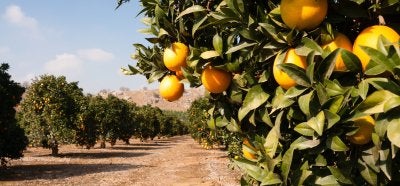Trees that are in poor health can look unattractive, but they can also spread illness to other plants on your property. The first step for successful tree disease treatment in Pleasanton is tree disease diagnosis. A few common conditions seen on California citrus trees include citrus nematode, sooty mold, and anthracnose. 
Citrus Nematode
This disease is caused by tiny, unsegmented roundworms called plant-parasitic nematodes. These parasites live in the soil around the plant and in the plant itself, feeding off of its roots. Aboveground symptoms of a citrus nematode problem include a decline in growth, twig dieback, small fruit size, and reduced yield. Underground, you will likely find poor growth on the treeâs feeder roots, and a dirty appearance to the roots as the soil will often stick to them. Once established in a grove, the nematodes canât be eradicated, so the best form of pest control is to manage them using nematicides.
Sooty Mold
This common condition doesnât infect the plant itself, but grows on its surfaces and can indirectly damage the tree. Sooty mold is a name used for several species of fungi that can grow on trees and create what looks like a layer of soot that blocks sunlight. When honeydew, a sticky, liquid excretion left behind by insects that eat the treeâs sap, is left on the plants, sooty mold can develop. Most trees can handle a small insect population and the sooty mold they encourage, but plant disease treatment may be necessary if the honeydew attracts additional insects, such as ants, or if the tree begins to fail. Common treatments for sooty mold include pest control, insecticidal soaps, and horticultural oils.
Anthracnose
Anthracnose is one of the most common tree diseases seen in California, and it can affect citrus trees in addition to other deciduous and evergreen varieties. This condition causes dark, sunken lesions to form on a treeâs stems, leaves, flowers, and fruits. Anthracnose is a fungal disease that usually wonât cause permanent damage to a tree and can be managed by improving air flow through the plantâs branches and fungicide applications.
